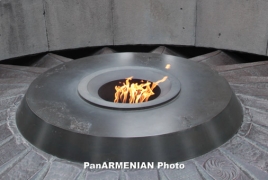
Chapman University’s Leatherby Libraries is partnering through ProQuest with the Visual History Archive (VHA) from USC Shoah Foundation to offer a fully streaming video collection of 53,000 primary-source testimonies of survivors and witnesses of genocide, including the one perpetrated against Armenians by the Ottoman Empire, Massis Post reports.
“Chapman is the first institution in California to purchase the Visual History Archive perpetual access license (PAL) via ProQuest,” said Charlene Baldwin, dean of the Leatherby Libraries. “The VHA is one of the largest digital collections of its kind in the world, with interviews conducted throughout 63 countries and in 41 languages, providing students and scholars with unedited, personal narratives of life before, during and after the interviewee’s experience with genocide. The collection includes testimonies from the Holocaust, the genocide against the Tutsi in Rwanda, Nanjing Massacre, Armenian Genocide and Guatemalan genocide.”
Access to the digital archive in its entirety is available through live-streaming 24/7 to all Chapman University students, faculty and staff. The Leatherby Libraries subscription was substantially supported by Chapman’s Rodgers Center for Holocaust Education.
The unedited video archive provides multiple pathways to learn from the eyewitnesses of history across time, locations, cultures and sociopolitical circumstances. Within the archive, there are nearly 700,000 images (photographs, documents and works of art), more than 2,500 recitations of literary works (poems, letters and diaries), and more than 2,100 musical recitals (singing of wartime songs or playing of instruments). The length of each testimony averages about two hours, though actual run times vary widely.
The Visual History Archive is fully searchable, with each testimony indexed and hyperlinked to the minute. This allows students, professors, researchers, and others to retrieve whole testimonies and segments within testimonies related to their area of interest through a set of 63,000 indexing terms, 1.8 million names, and 683,000 images.

